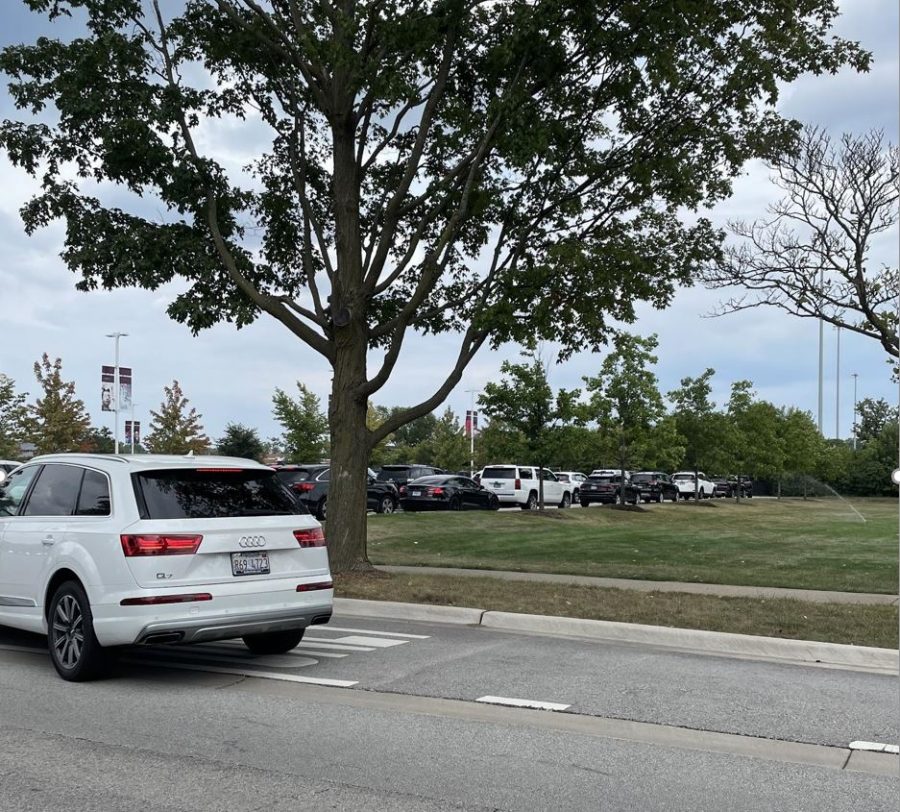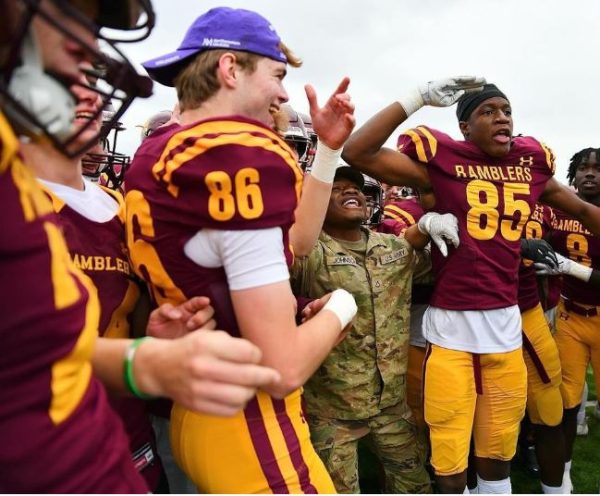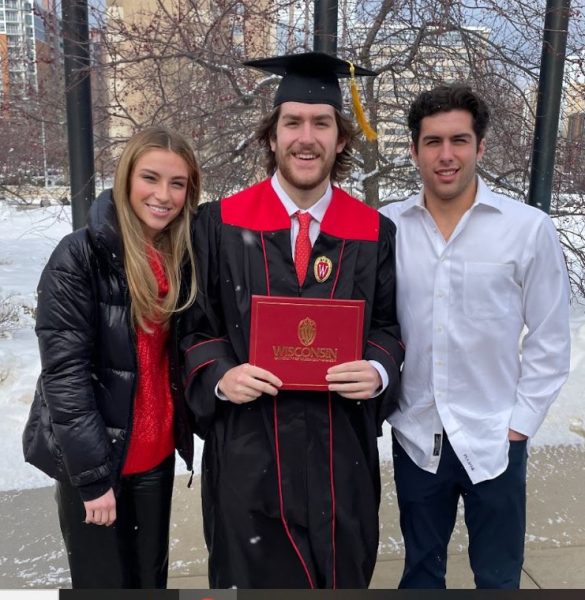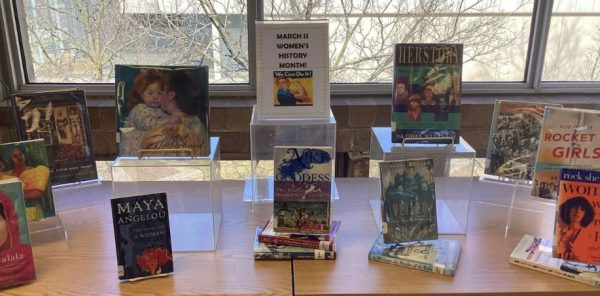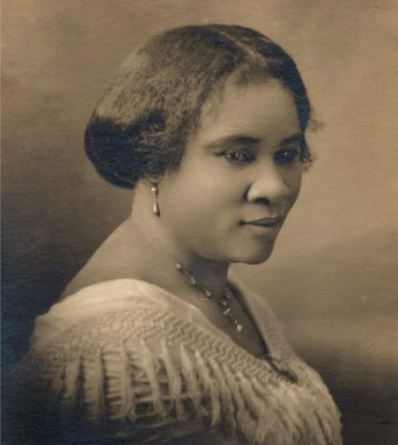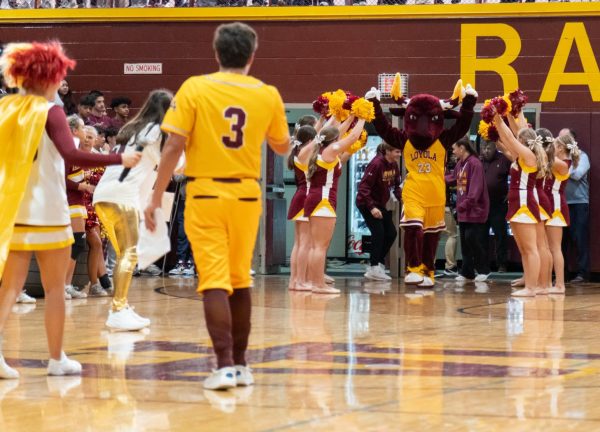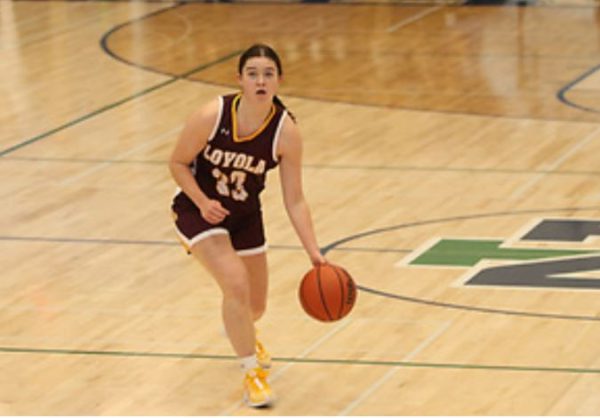From Headaches to Car Accidents: The Loyola Traffic Story
September 15, 2021
As a new school year begins, so does the stress that comes along with it. If you ask any senior at Loyola Academy what the biggest stressor has been so far, the answer will probably be the traffic.
From my own personal experience, the Loyola traffic has added an extra fifteen minutes to my commute each day. I leave for school at 7:20 and probably get to the Lake highway exit at about 7:30. It’s not until 7:40 that I finally reach the senior parking lot.
The same goes for leaving school. You’ll probably see me running to my car after the final bell rings to ensure I’m one of the first out of the lot. For my peers that aren’t as speedy as me, they might end up waiting extra minutes to exit the lot.
Caroline Carney, a fellow senior, feels pressure to leave her house early to get to school on time. She noted, “Without anyone in front of me it’s pretty easy [to get in and out of school] but with traffic and everything it’s probably an extra 15 minutes.”
Carney attributes the traffic to, “People [who] aren’t used to the way Loyola [traffic] is…especially the new freshman parents and people who just started driving.”
Dennis Stonequist, the Executive Vice President of Loyola Academy adds, “You’re fighting New Trier traffic and you’re fighting Chicago daily traffic on the Edens.”
He later elaborates, “This is the first time we’ve had full school in two years so there’s a lot of rookie drivers and parents.”
According to Stonequist, the parking lot hits its peak at 7:45 in the morning, however, in the afternoon by 2:47 almost everyone is out.
Julie Bleser, a freshman parent, has also been a firsthand witness to the craziness that is Loyola traffic. She says, “Seen [the drop off line] go as far as right at the end of the caution lanes on the expressway.”
Bleser additionally states, “I have heard other parents complain that their kids have had tardy issues for being late.”
To problems like this, Stonequist responds, “There’s going to be some learning curves. A lot of people trying to leave a space and get into a space is difficult.”
Bleser has said she avoids traffic by just picking her son up in the Lake Starbucks’ parking lot. “I know we’re not supposed to do it but it seems like the only logical and fastest way to pick them up because we’ve been told that we should not wait on the side streets in the neighborhood,” she explains.
Despite some complaints during the first few weeks of school, improvements have been made. Carney comments, “At least there’s not a line all the way down onto the expressway anymore.”
Stonequist accounts for some of these changes to the technical modifications that were made, including adjusting the traffic light time. He also voices that “We communicate the heck out of [the guidelines], and putting faces [like himself and the security guards] out there alleviates stress.”
Both Carney and Bleser have offered some ideas on how Loyola can continue to decrease traffic. Carney proposes, “Giving certain times for certain grades to come in,” while Bleser expresses, “Maybe there’s another area where you can have part of the building designated to be another exit for students.”
On a lighter note, Stonequist really, “Would like to say thank you to our seniors. The seniors parked in the far lot have been totally patient and understanding, especially because they often get the low end of the totem pole.”
The Executive Vice President concludes by asserting that the Loyola traffic has built a sense of community across the school. He imparts, “At this time, we are finding ways to connect, albeit in traffic.”

